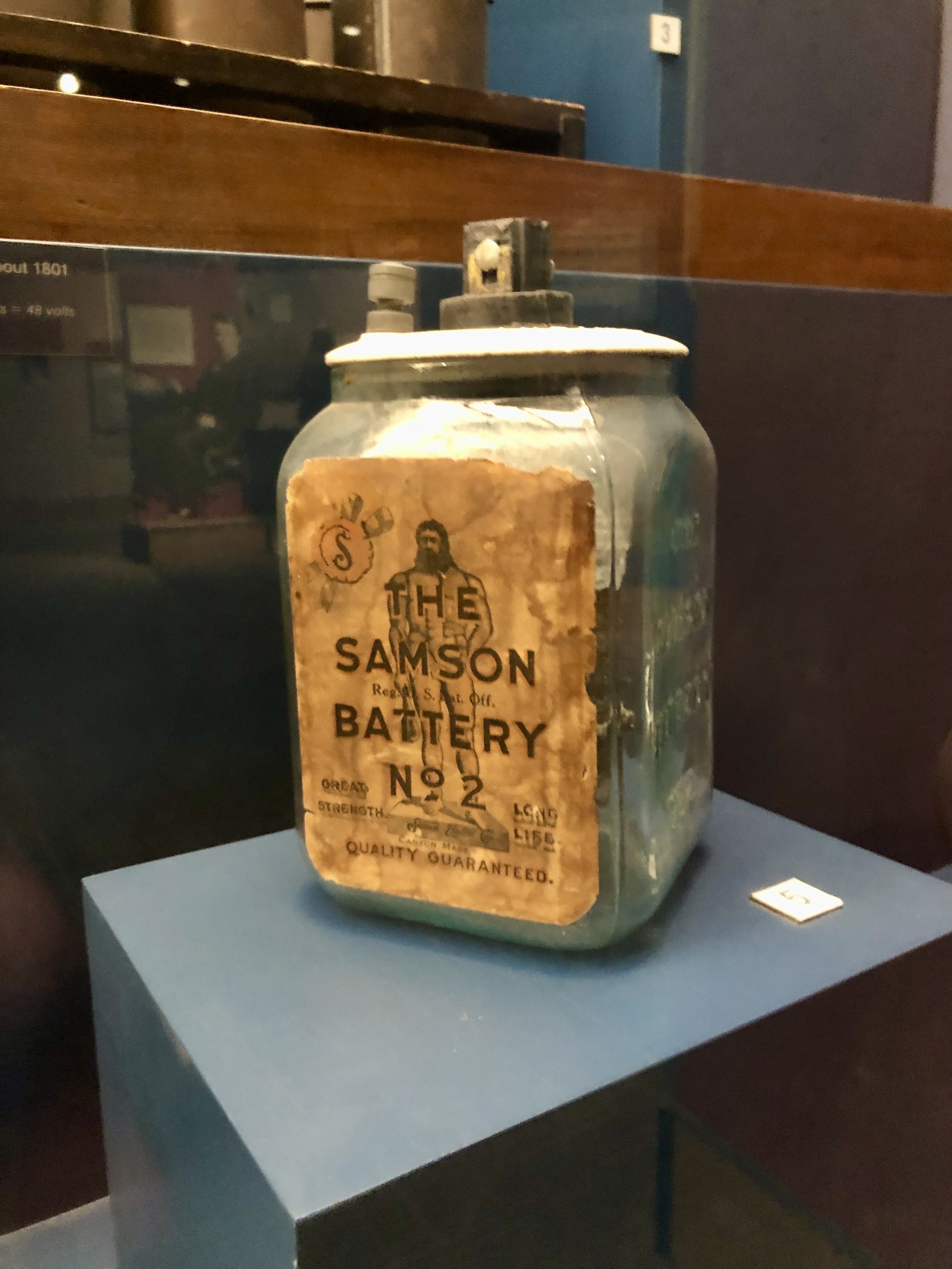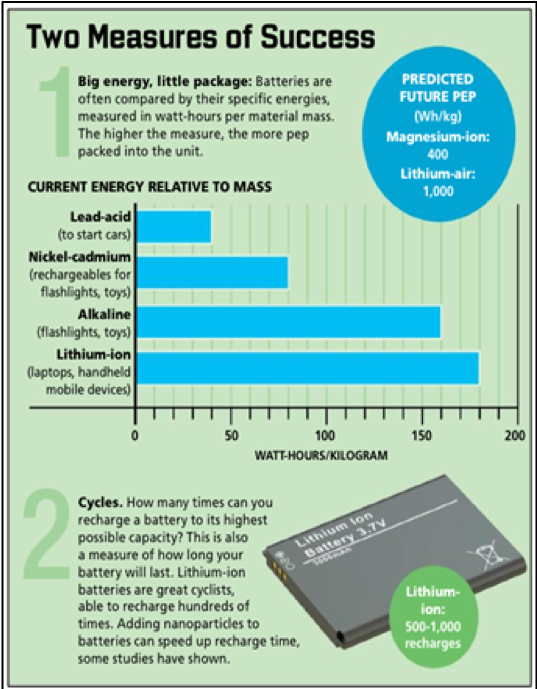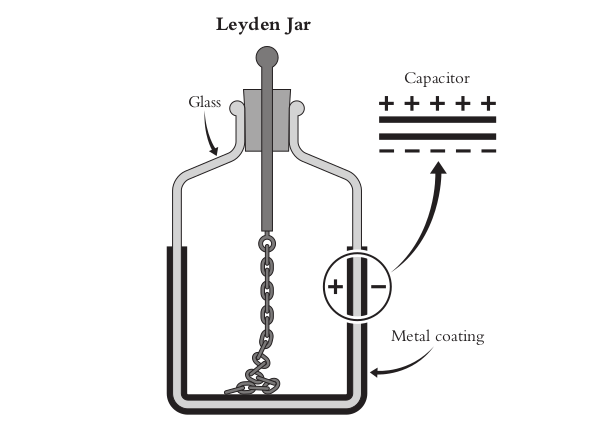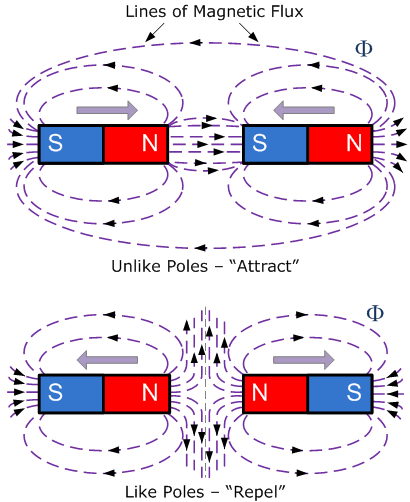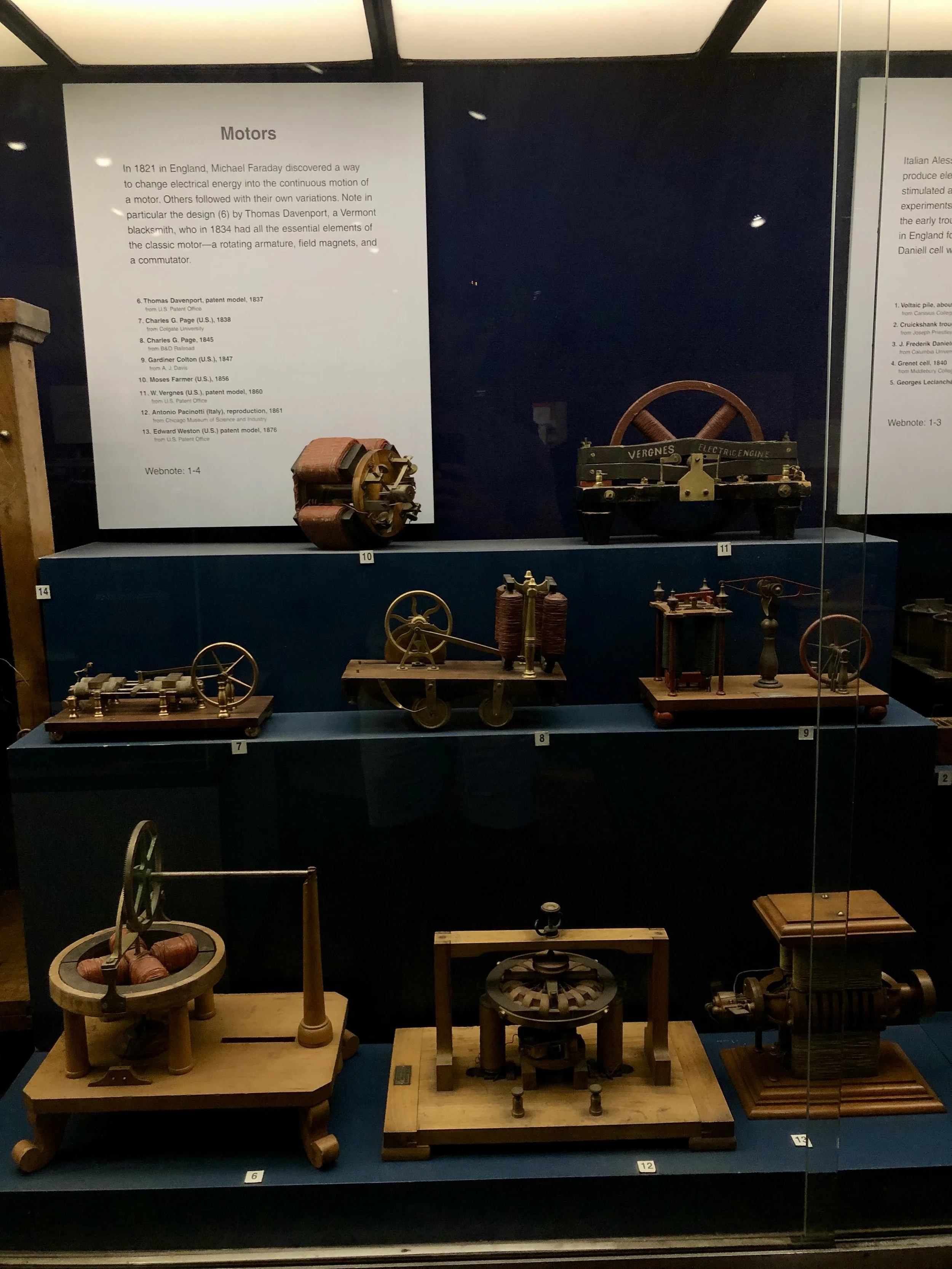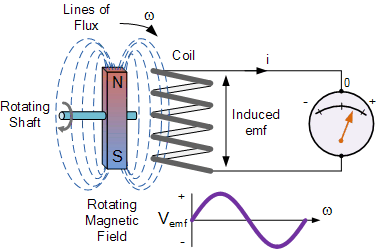The Battery by Schlesinger
Ref: Henry Schlesinger (2011). The Battery: How Portable Power Sparked a Technological Revolution. HarperCollins.
_____________________________________________________________________________
Summary
A historical guide encompassing the discovery of electricity to the development of the battery to the manufacturing of transistor computers, and the scientists who made it all possible.
_____________________________________________________________________________
Fundamentals/Terminology
Cathode Ray Tube (CRT): A sealed glass tube with two metal plates on each end connected to a battery and induction coil that glows while under power. CRTs are distorted by an EM field that bends the flow of particles.
Circuits
Parallel Circuit: Wiring of batteries positive- positive in which Voltage remains constant while amperage increases in proportion to the number of connections made (discovered by Henry).
Series Circuit: Wiring of batteries positive- negative in which amperage remains constant while voltage increases.
Current (Ampere)
Ampere: Named for Andre-Marie Ampere, the French Mathematician/physicist, who studied EM fields.
The drop-off in the current of a line is proportional to the square of the distance travelled.
Liquid Crystal Display (LCD): Crystals set between two panes of thin glass with a conductive surface that become opaque when small amount of power is applied. Treated with the right dye, the crystals can change to a predictable color. LCDs react to both heat and EM.
Resistance (Ohm)
Power (Watts)
Watt: Named for James Watt who perfected the steam engine for industrial use.
Volt (Volts)
Volt: Named for Allesandro Volta, the Italian inventor of the battery.
_______________________________________________________________________________
Batteries
How Batteries Work: When a battery discharges, it releases electrons via the negative electrode of a metal to external circuitry that powers a device before returning to the positive electrode. During normal use, a battery’s negative pole becomes oxidized, sending off electrons, while its positive pole gives up O2. When a storage battery is recharged, the positive pole is oxidized and the negative pole reduced, shedding the positively charged ions accumulated during use.
Anode: The negative electrode of a battery that gives up its charge.
Cathode: The positive electrode of a battery that accepts electrons.
Primary Batteries: Non-rechargeable batteries, changes cannot be reversed because of the chemical composition and arrangement of the metals used.
Zn-Cu Battery (Zn- Anode, Cu- Cathode):
Cons: Positive H ions released from the Zn during oxidation accumulate on the negatively charged Cu to form a thin film of tiny bubbles that reduces the output and requires frequent replacing and cleaning of the electrolyte and electrodes.
Rechargeable Batteries: Batteries can be returned to their original chemical state by reversing the flow of current.
Li-Cl Battery:
Cons: Highly reactive, highly flammable, quickly oxidizes when exposed to air.
Alkaline: Rechargeable,
NiCd: Rechargeable, first Generation.
NiMH: Rechargeable
Li-ion: Rechargeable
Common Dry Cell (aka No. 6): Measured 6” high, one of the few early standard battery sizes.
Faraday’s First Law of Electrolysis: To double the output of a battery, the amount of material in that battery must be doubled.
Future Batteries
Methane Fuel Cell: Under development by Sony; features a mini fuel cell with a Li-ion battery that can switch between Methane, Li-ion, or run them both simultaneously to power devices.
Flat Film Battery: Comprised of micron and submicron thin layers that create the anode, cathode, and electrolyte, based on standard chemistries; flexible and no thicker than a typical playing card (down to ~5 microns thick). Offers adequate power to run a small IC in a credit card, a label on canned peas, or a small active RFID.
Micro-batteries: ~Half the size of a human cell, assembled using a genetically altered M13 Virus set on a specially prepared surface to build up materials for the anode.
Ultracapacitors: Comprised of two nonreactive plates coated with C mounted in an electrolyte in which the surface area of each porous plate is enormous, and able to hold a large charge.
Schindall and a team at MIT’s lab of EM and Electronic systems (LEES). What they’ve done is replace the activated C of ultracapacitors with C nanotubes that are 1/30,000 of a human hair. The tubes are grown on the surface. Once a plate's surface is prepared with a catalyst, its then exposed to a H-C gas at a high T. As the gas fills the closed chamber, the catalyst captures the C atoms to build up or self-assemble a fuzzy layer of tiny regularly spaced nanotubes vertically aligned on the plates surface within minutes to grow a little nanotube forest. “What we’re trying to do Is grow an array of nanotubes on a conducting electrode, like Sn foil, for example,” Schindall explained. “We believe a nanotube could operate at 3-4 V, about 5x as much more storage capacity as a commercial ultracap.”
Future Charging:
Induction Charging: Use of an induction coil that beams energy into a Rx mounted in the device, though this only works for relatively short distances or when the device is placed directly against the coil.
Ambient EM Harvesting: A method to harvest ambient EM radiation emitted from things like Wi-Fi Tx and cell phone towers that surround us every day, filling the air with energy to recharge batteries or run small devices.
_______________________________________________________________________________
Milestones
1746: Leyden Jar (Musschenbroek)
1791: The Electric Nervous System (Galvani)
1790s: First Battery Sketch (Nicholson)
1800: First Battery- Voltaic Pile (Volta)
1800: Electrolysis (Nicholson)
1820: Electromagnetism (Oersted).
1820s: EM Field (Ampere)
1825: EM Field performs work (Sturgeon)
1828: Electric Motor (Faraday)
1831: Induction (Faraday)
1835: Relay (Henry)
1839: Nitric Acid Battery (Grove)
1840: Smee Battery (Smee)
1844: Telegraph (Morse)
1859: Rechargeable Pb-S lead acid battery (Plante)
1866: Leclanche Wet Cell (Leclanche)
1874: Telegraph with Sound (Grey)
1876: Telephone (Bell)
1879: Electric Light (Edison)
1887: Dry Cell (Gassner)
1887: Radio Waves (Hertz)
1888: LCDs (Reinitzer)
1890: Coherer- Receiver (Branly)
1895: Radiation (Roentgen)
1895: Wireless Transmitter (Marconi)
1897: Electron (Thomson)
1900: Wireless Sound (Fessenden)
1904: Vacuum Tube (Fleming)
1907: LED (Round)
1909: Model T (Ford)
1936: Printed Circuit Boards (Eisler)
1946: ENIAC (Mauchly/Eckert)
1947: Transistors (Bardeen/Brattain/Shockley)
1957: The Alkaline Battery (Urry)
1961: Integrated Circuits (TI)
1979: Li-ion
_______________________________________________________________________________
Misc Quotes
When chided for the many battery experiments in which he failed, he is reputed to have answered, “No, I didn’t fail. I discovered 24,999 ways that the storage battery does not work.”-Edison.
Edison didn’t want to reinvent the wheel, just build a better wheel, and then sell it in quantity.-Battery by Schlesinger.
Morse got his big break when a proposal went before Congress to construct a series of Chappe-style signal towers between NY and New Orleans. The idea was to lay the wires along an existing railway line underground, a system abandoned halfway through the project in favor of overhead poles. This made sense not only because it required permission from just a single entity, rather than dozens of homeowners and businessmen, but from an engineering standpoint as well. The railroad connected the two cities with a direct path that had already been surveyed and cleared.
_______________________________________________________________________________
Chronology
1979-1980: Li-ion rechargeable batteries are introduced using Co as a cathode.-Battery by Schlesinger.
May, 1973: The Elsi Mate EL-805 pocket calculator is introduced by SHARP using an LCD screen vice a user interface. The unit housed 5 ICs, was less than an inch thick, weighed 7.5 oz, and would run for 100hrs on a single AA battery.-Battery by Schlesinger.
1971: The 4004 is introduced by Intel with 2300 transistors on a single chip.
Apr, 1965: Moore’s Law; Gordon Moore, while heading Fairchild’s Semiconductors R&D effort, before leaving to cofound Intel predicts a doubling of circuits in IC’s every two years, seeing no reason why that shouldn’t continue far into the future.-Battery by Schlesinger.
1961: The first integrated circuit- IC is debuted by TI, which it called a molecular electronic computer. The IC was built under a USAF contract and measured 6.3 in3, weighed 10 oz., and included 47 chips that did the work of about 8500 transistors, diodes, resistors, and capacitors.-Battery by Schlesinger.
1959: Eveready begins production of Urry’s Alkaline battery.-Battery by Schlesinger.
9 Oct, 1957: The Alkaline battery using Zn-MnO2 in an alkaline substance is patented by Lewis Urry. By using powdered Zinc to increase the surface area for chemical reactions, Urry’s alkaline had an estimated life span of 40x that of the Zn-C.-Battery by Schlesinger.
1954: The MIM-3 Nike Ajax Missile becomes the first operational guided surface air to air missile, designed to attack conventional bomber aircraft.-Battery by Schlesinger.
1954: The Transistor Digital Computer (TRADIC) is built by Jean Felker at Bell Labs for the USAF using 700 transistors and diodes and 10,000 Ge crystals.-Battery by Schlesinger.
1951: TI is founded as Geophysical Services Inc, previously an oil industry supplier.-Battery by Schlesinger.
23 Dec, 1947: The Transistor is first demonstrated at Bell Labs by Bardeen, Brattain, and Shockley by applying impurities to Ge, ‘doping’. Depending on the impurities added, the crystalline structure had either an excess of electrons (N-type for negative) or few electrons (P-type for positive). A change in current through the doped surfaces created P-N-P or N-P-N configurations, which could be turned into amplifiers or on/off switches.
7 May, 1946: SONY corporation (sonus- latin for sound, sonny- slang for young boy) is founded in Tokyo, Japan.-Battery by Schlesinger.
15 Feb, 1946: The Electronic Numerical Integrator and Computer (ENIAC aka “The Giant Brain”) is built by Mauchly and Eckert as a secret WWII military program to calculate artillery tables. ENIAC used 18,000 vacuum tubes and encompassed 1800 ft2.
1944: The USG passes the GI Bill (aka the Servicemen’s Record Adjustment Act of 1944) providing low interest to no money down for mortgages and college tuition/stipends for returning vets. The bill was passed in fear of the economic impact of millions of American soldiers returning home en masse.-Battery by Schlesinger.
1943: The FM Walkie-Talkie is patented by Paul Galvin.-Battery by Schlesinger.
1942: Introduction of the M1 “Bazooka”, so-called by troops in the field after the nonsensical instrument played by radio comic Bob Burns, which he improvised from plumbing pipes.-Battery by Schlesinger.
1942: The Mercuric-Oxide cell battery is introduced by Sam Ruben. Under a TS program, PR Mallory Company (later Duracell) mass produced millions of batteries needed for the war effort.-Battery by Schlesinger.
1940: Invention of the Mine detector by Polish military engineer Józef Kosacki while living in England after the German invasion of Poland in 1939. Kosacki created a long pole with a flat disk on the end holding two coils in parallel (one tx an oscillating signal while the other rx the return). When a metallic object, such as a mine, interrupted the signal, the operator could clearly hear it. Kosacki never patented the device, called the Mine Detector (Polish) Mark 1 or simply, the Polish Detector, and freely gave it to both the British and the Americans.-Battery by Schlesinger.
1936: The Rural Electrification Act of 1936 is passed by the USG, wiring nearly all US households for electricity.-Battery by Schlesinger.
1936: Invention of Printed Circuit Boards (PCBs) by German Refugee Paul Eisler.
1936: Germanium is added to the list of semiconductors at MIT’s Rad Lab (others include Si, Se, Te).
1922: The American Appliance Company (later Raytheon- Greek for Light from the Gods) is co-founded by Vannevar Bush.-Battery by Schlesinger.
2 Nov, 1920: The first Radio station, KDKA in Pittsburg, goes on air.-Battery by Schlesinger.
1917: The National Bureau of Standards (today the National Institute of Standards and Technology) begins developing standardized sizes and performance criteria for batteries.-Battery by Schlesinger.
1916: The first Radio broadcast is transmitted by Frank Conrad, an engineer with Westinghouse in Pittsburgh. After constructing his own Tx, Conrad went on air at his home in Wilkinsburg, PA, broadcasting news and whatever struck his fancy, eventually adding music to his repertoire. Conrad eventually joined forces with a local music store in exchange for mentioning their name on the air.-Battery by Schlesinger.
1909: The Model T is introduced by Ford; based on the internal combustion engine, the Model T almost entirely eliminated Edison's reliable alkaline storage battery for cars.-Battery by Schlesinger.
1907: The LED is inadvertently created by Henry Joseph Round, a colleague of Marconi. A type of transistor, the LED’s light is produced by the release of energy as e- travel across a semi-conductive material.-Battery by Schlesinger.
1904: The vacuum tube is created by Sir John Ambrose Fleming. He modified a light bulb in such a way that it picked up EM signals and converted them into electrical current.-Battery by Schlesinger.
12 Dec, 1901: Marconi transmits his first transatlantic signal from England to Newfoundland- the letter S in Morse Code.-Battery by Schlesinger.
1901: Marconi transmits a message between the Isle of Wight and Cornwall, ~200 miles, demonstrating that radio waves follow the curvature of the Earth.-Battery by Schlesinger.
1900: Sound is wirelessly transmitted by Reginald Fessenden. The idea was to extend the traditional wireless telegraphic bursts into a continuous wave that could be modified by a voice. To receive the wave, he designed a replacement for the coherer, which he called a liquid barretter- a thin Pt wire immersed in an acidic solution that could receive a continuous signal.-Battery by Schlesinger.
1897: Negatively charged particles, the electron, is discovered by JJ Thomson who theorizes that the mysterious glow of a CRT was caused by negatively charged particles pouring off the flat cathode that were attracted to the positively charged anode.-Battery by Schlesinger.
1895: Invention of the Wireless Transmitter by Guglielmo Marconi; after sparking energy across a gap of 8” and powered by 15V and boosted by an induction coil, a signal was sent over a few hundred yards. From there, he slowly increased distance, developing antennas, at first grounding them (like lightning rods) and then extending them upwards with kites and balloons, before inventing the directional antenna or aerial.-Battery by Schlesinger.
1895: Radiation is discovered by Wilhelm Roentgen in fluorescing glass tubes.-Battery by Schlesinger.
8 Dec, 1891: The first modern Tattoo machine is created by NYC tattoo artist, Samuel O’Reilly, who modified the electric pen, significantly shortening the long and painful tattoo process.-Battery by Schlesinger.
1890s: Columbia Dry Cell batteries, previously Leclanche wet cell batteries, are introduced by the Cleveland based Eveready (later Energizer) company.-Battery by Schlesinger.
1890: Invention of the coherer (receiver) by French Physicist Edouard Branly. By introducing an electrical burst to metal filings in a test tube, the filings coalesced to form a kind of fragile wire capable of conducting electrical current. Experimenting with different metallic filings, he hit on the combination of Ag and Ni powder in a vacuum-sealed thermometer tube, making it even more sensitive to EM waves, then invented a little hammer (or trembler) that worked like a doorbell to gently tap the glass and de-coalesce the filings, terminating the circuit after activation. It was an ingenious design. Each time a burst of EM energy hit the coherer, the metallic filings completed a local battery-powered circuit connected to a Leclanche type cell that ran a standard telegraph printer. When the signal ceased, the little hammer would tap the glass and break the fragile string of metallic filings to await a new burst of waves.-Battery by Schlesinger.
1888: LCDs are accidentally discovered by Austrian Botanist Friedrich Reinitzer, who noticed that some organic crystals- Cholesteryl Benzoate- exhibited strange properties when exposed to heat- they turned cloudy and then clear at specific temperatures.-Battery by Schlesinger.
1887: The “Dry Cell” battery is introduced by German chemist Carl Gassner. In a simple variation on the Leclanche battery, Gassner mixed ammonium chloride with POP and some ZnCl, and then sealed it in a Zn container.-Battery by Schlesinger.
1887: The existence of Radio Waves (aka Hertzian waves) are proven by German physicist Heinrich Hertz. The waves emanate from simple electrical sparks generated from a battery.-Battery by Schlesinger.
1879: The electric light is patented by Edison. Certain that electrical lighting would find its power from a central station, his eventual plan called for the creation of an entire electrical infrastructure to supply power with generating stations, power lines, and metering systems.-Battery by Schlesinger.
1878: Edison begins working on the lightbulb drawing on a large body of knowledge, specifically, the Yablochkov system that lit multiple “electric candles” simultaneously in a single circuit, and a powerful generator called the telemachos that lit 8 bulbs at once, on a single circuit.-Battery by Schlesinger.
14 Feb, 1876: The telephone is patented by Bell. Unfortunately for Gray, his lawyer submitted a patent caveat application on the same day as Bell’s lawyer. Bell’s patent was approved first.-Battery by Schlesinger.
1875: Introduction of the Gallows telephone by Bell and Watson; the user would speak into a megaphone- shaped microphone, causing a small membrane at the bottom to vibrate with sound waves. The membrane was attached to a thin rod in a metallic cup of acid with one battery-powered wire attached. Each time someone bellowed into the megaphone-like speaker, the resistance on the line changed with the vibrations of the voice as the rod moved up and down. An identical unit at the other end of the line reversed the process, essentially decoding the electrical impulses back into sound vibrations. It wasn’t until the metallic cup and its acidic mixture were replaced by a magnet and soft iron bar in the center that vibrated via a membrane to change resistance on the line that the telephone became a practical device.-Battery by Schlesinger.
1874: A telegraph that transmits different sounds, each played by a separate key, is demonstrated by Gray.-Battery by Schlesinger.
1866: The Leclanche Wet Cell is introduced by French Engineer Georges Leclanche. Using a glass jar filled with Ammonium Chloride, MnO2 (+) and Zn (-) with a small bar of C, the battery pumped out 1.5V and is generally seen as the forerunner to the world's first widely used batter, the Zn-C cell, or dry cell.-Battery by Schlesinger.
1860s: Transmission of Radio Waves by US Dr Mahlon Loomis in VA. Loomis apparently transmitted signals more than a dozen miles across the Blue Ridges and received a patent with a vague description. His research was stalled by the Civil War, and funding tied up in Congress. Nothing ever came of his invention.-Battery by Schlesinger.
1859: Invention of the rechargeable Pb-S lead acid battery by French Physicist Gaston Plante that can be recharged with a reverse current. By using Pb, which resembles silk, the surface slowly accumulates a layer of H2O2 that is porous, polarizing the plates with Grove batteries and allowing them to self-discharge, then charge them again and allow for self-discharge, a tedious process known as formation.-Battery by Schlesinger.
5 Aug, 1858: The first telegraph messages are exchanged between Queen Victoria and President Buchanan.-Battery by Schlesinger.
1851: Western Union is formed by Sibley to buy up and merge various telegraph companies.-Battery by Schlesinger.
1844: The telegraph is invented by Morse.
1840: Invention of the Smee Battery by Alfred Smee using Zn-Ag immersed in diluted sulphuric acid.
1839: The Nitric-acid battery is created by Sir William Robert Grove that includes a Zn anode and Pt cathode with a porous material between them and two different acidic substances or electrolytes (Sulfuric Acid- anode, Nitric Acid- cathode), which depolarizes itself.-Battery by Schlesinger.
1835: The Relay is invented by Henry to amplify electrical current while traveling over long distances. The relay would open and close a secondary circuit along the way with its own smaller battery and EM.
Aug, 1831: Induction is shown by Faraday, proving the principle behind a generator creating an electrical current by moving a magnet inside a coil of wire.-Battery by Schlesinger.
1828?: The electric motor is first demonstrated by Faraday, who makes a wire rotate within a magnetic field. Faraday placed a magnet upright in a cup of Hg connected to one terminal of a battery. The second terminal was connected to a wire with one end in the Hg. When the circuit running through the wire, Hg, and battery was completed, the wire began rotating around the magnet.-Battery by Schlesinger.
1825: Sturgeon wraps a few turns of wire attached to a battery around a 7 oz piece of Fe and lifts 9lbs. Electricity- invisible, weightless, and mysterious- could perform work.-Battery by Schlesinger.
1820s: Construction of Magnetic Fields; building on Oersted, French scientist Andre-Marie Ampere created a magnetic field by forming wires into coils. He later invented the galvanometer- a voltmeter- by simply taking a few turns of wire around a compass. The slightest amount of current would create an EM field and cause the needle to twitch.-Battery by Schlesinger.
1820: The EM Field and electromagnetism are discovered by Oersted after inadvertently leaving a compass near a completed circuit running from a voltaic pile. Oersted noticed that the compass needle twitched when moved closer to the circuit; electricity was not like water in a sealed pipe.-Battery by Schlesinger.
1802: Volta finds that MnO2 and Zn in saline generates a higher voltage than Cu and Zn.-Battery by Schlesinger.
20 Mar, 1800: The electric battery is introduced by Italian Physicist Alessandro Volta by layering plates of different metals (anodes, cathodes) separated by brine-soaked cloth (electrolyte) creating a weak but steady current.-Battery by Schlesinger.
‘A number of pieces of Zn, each the size of a half crown, were prepared, and an equal number of pieces of card cut in the same form; a piece of Zn was then laid upon the table and upon it a half crown; upon this was placed a piece of card moistened with water, upon the car was laid another piece of Zn, upon that another half crown…then a wet card, and so alternately until 40 pieces of each had been placed upon each other; a person then, having his hands well wetted, touched the piece of Zn at the bottom with one hand, and the half crown at the top with the other; he felt a strong shock, which was repeated as often as the contact was renewed: the Voltaic Pile.’
Volta, placing two coins of different metals on his own tongue, felt the distinct tingle of an electrical charge. Very soon Volta began ranking combinations of metals to determine which pairings produced the greatest electrical charge, or what he took to calling “electromotive force,” and found a combination of Ag and Zn seemed to offer the best results.-Battery by Schlesinger.
1800: Electrolysis is demonstrated by Nicholson using Galvanic Current to decompose water. Thought to be an element, water was definitively shown to be a compound of H and O.-Battery by Schlesinger.
1790s: The first true battery is sketched by Nicholson while describing how a torpedo fish may work.-Battery by Schlesinger.
1791: The Nervous System is discovered by Galvani, Professor of Anatomy and obstetrics in Bologna, Italy. While dissecting a frog, Galvani touched the scalpel to the amphibian’s leg, which unexpectedly twitched. He wrote of his discovery in a 1791 paper, ‘De Viribus Electricitatis in Motu Musculari Commentarius’, in which the frog's leg muscle acted like a charged leyden jar to activate the nerve. What Galvani had done was to bring two dissimilar metals- his scalpel and a metal plate- in proximity with a conductor, presumably fluid or tissue from the frog. As e- were lost from one metal via oxidation and picked up by the other, the frog's nerve reacted to the flow of electrons.-Battery by Schlesinger.
1746: The Leyden Jar is accidentally discovered by Dutch Physicist Peter van Musschenbroek. In its earliest form, the Leyden Jar was a glass vial topped with a cork pierced with a wire or nail that dipped into water and stored static electricity. The Jar was charged by exposing the end wires into contact with a friction device (Britannica).
_____________________________________________________________________________
